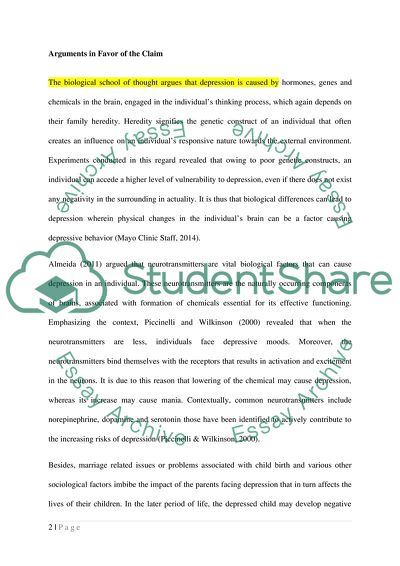Cite this document
(Depression and Biological Factors Dissertation Example | Topics and Well Written Essays - 3000 words, n.d.)
Depression and Biological Factors Dissertation Example | Topics and Well Written Essays - 3000 words. Retrieved from https://studentshare.org/health-sciences-medicine/1856638-assess-the-claim-that-depression-results-from-biological-factors
Depression and Biological Factors Dissertation Example | Topics and Well Written Essays - 3000 words. Retrieved from https://studentshare.org/health-sciences-medicine/1856638-assess-the-claim-that-depression-results-from-biological-factors
(Depression and Biological Factors Dissertation Example | Topics and Well Written Essays - 3000 Words)
Depression and Biological Factors Dissertation Example | Topics and Well Written Essays - 3000 Words. https://studentshare.org/health-sciences-medicine/1856638-assess-the-claim-that-depression-results-from-biological-factors.
Depression and Biological Factors Dissertation Example | Topics and Well Written Essays - 3000 Words. https://studentshare.org/health-sciences-medicine/1856638-assess-the-claim-that-depression-results-from-biological-factors.
“Depression and Biological Factors Dissertation Example | Topics and Well Written Essays - 3000 Words”, n.d. https://studentshare.org/health-sciences-medicine/1856638-assess-the-claim-that-depression-results-from-biological-factors.


